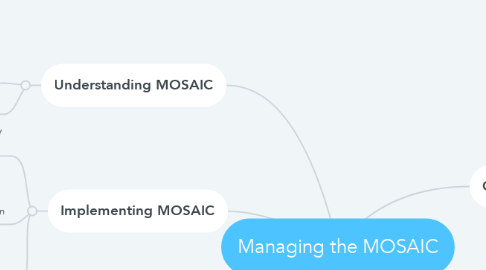
1. Understanding MOSAIC
1.1. MOSAIC as a framework
1.2. Purpose of MOSAIC
2. Implementing MOSAIC
2.1. Planning and Strategy Development
2.1.1. Setting Goals and Objectives
2.1.2. Timeline and Milestone Planning
2.2. Execution
2.2.1. Role of Leadership during Execution
2.2.2. Collaboration and Teamwork
2.3. Monitoring and Adjustments
2.3.1. Regular Monitoring Methods
2.3.2. Making Necessary Adjustments Based on Evaluation
3. Challenges and Solutions
3.1. Overcoming Resistance to Change
3.2. Encouraging Participation and Commitment
3.3. Ensuring Clear and Consistent Communication
4. Core Components of MOSAIC
4.1. Motivation
4.1.1. Understanding Employee Motivation
4.1.1.1. Assessing Employee Motivation Levels
4.1.1.2. Strategies to Improve Motivation
4.2. Organisation
4.2.1. Leading Organisational Change
4.2.1.1. Establishing Core Values and Vision
4.2.1.2. Change Management Strategies
4.3. Supervision
4.3.1. Role and Importance of Supervision
4.3.1.1. Characteristics of Effective Supervision
4.3.1.2. Developing Supervisory Skills
4.4. Assessment
4.4.1. Purpose of Assessment in an Organisation
4.4.1.1. Methods of Assessment
4.4.1.2. Effective Assessment Practices
4.5. Individual Differences
4.5.1. Understanding Employee Diversity
4.5.1.1. Challenges of Individual Differences
4.5.1.2. Effective Management of Individual Differences
4.6. Communication
4.6.1. Importance of Communication in Organizations
4.6.1.1. Types of Communication: Verbal, Nonverbal, Written
4.6.1.2. Strategies for Effective Communication


